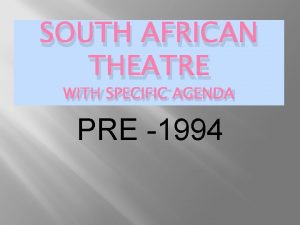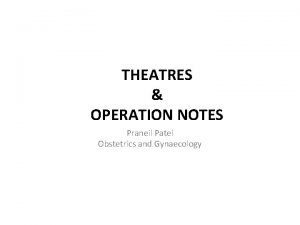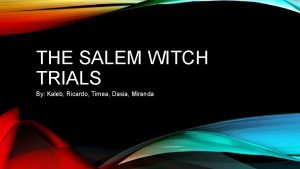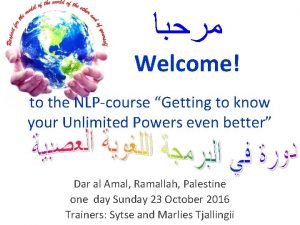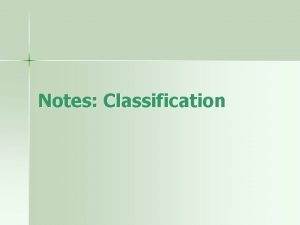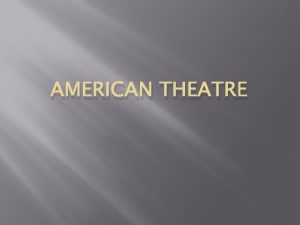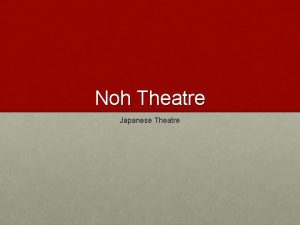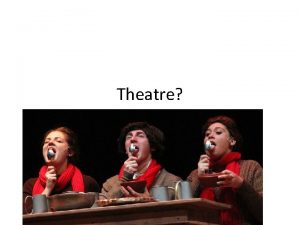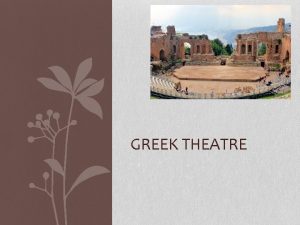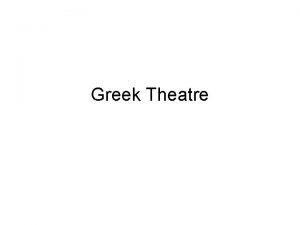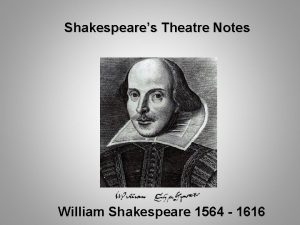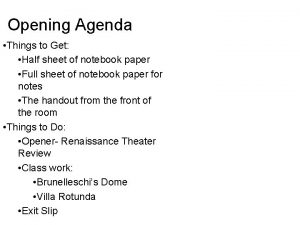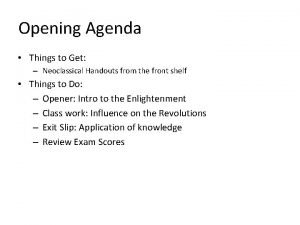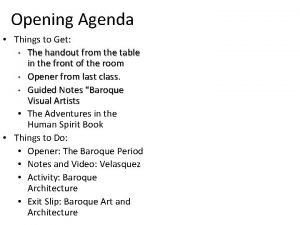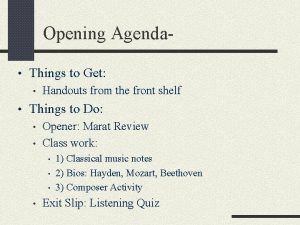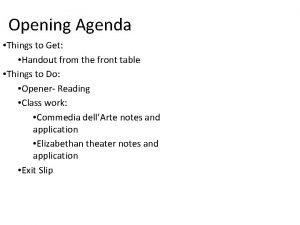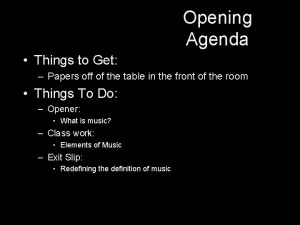Opening Agenda Things to Get Theatre notes from














- Slides: 14

Opening Agenda • Things to Get: • Theatre notes from last class • One piece of notebook paper • The article and learning guide (opener and exit slip) from the table in the front of the room • Things to Do: • Finish Theatre Exit Slip Questions • Opener- Review of Music • Class work: • Notes: Renaissance Court Dances • Performance Assessment: Court Dances • Exit Slip: Social Dance as an example of Renaissance society

Opening Agenda • Things to Get: • Notebook page 58 • Two handouts from front table • Things to Do: • Study Guide Page 2 questions; read page 58 in your notebook to answer – 10 minutes • Dance mini-lesson • Test Review • Notebook Check Items • TEST NEXT CLASS

Opener Read the article entitled “Music History 102: the Renaissance” and answer the questions on your Learning Guide.

Check the answers! 1) Identify and describe two inventions from the Renaissance and their impact on society. – printing press – Compass 2) What were two factors that caused the Catholic church to loose its grip on society during this period? – Copernicus’- position of the Earth – Martin Luther/Protestant Reformation 3) Name two important composers of Renaissance dance music? – Praetorius (c. 1571 -1621) ; Susato (c. 1500 -1561) 4) Why is La Spagna an excellent example of Renaissance dance music? – Buoyant rhythms / sounds of Renaissance dance 5) Who did Des Prez study under? – Johannes Ockeghem 6) What work survives Des Prez? – a dozen masses, a hundred motets, and lots of secular music 7) How does Des Prez’s Gloria show influence of the Flemish school? – otherworldly choral sound new music for counterpoint 8) Describe polyphony during this period. – could be complex, obscured words and meaning of the text 9) What were two occupations held by Palestrina? – Composer and owner of a fur business 10) How did Palestrina modify his work to meet the demands of the Council of Trent? Describe the characteristics of the vocal part that made this modification possible. – composed in a restrained style (simpler) 11) What is Palestrina’s most famous work? – Pope Marcellus Mass 12) Who did Palestrina influence? – Mozart, Beethoven, Brahms

Agenda • To Do: – Turn in January Culture Projects to the A 2 box. – Staple page 4 to the correct viewing/listening guide along with your evidence. – Turn to page 68 for your opener and notes on Renaissance Dance.

Opener – page 68 1. Name the two types of Renaissance theater. 2. What were the two developments to theater in England during the Renaissance? 3. Name two things used in Commedia dell Arte that make it a unique style. 4. Name the song title, composer, and form. 5. Name the song title, composer, and form. 6. Name the song title, composer, and form. 7. Why do these songs sound the same? 8. Watch the provided clip and describe three things about Renaissance Dance.

Renaissance Court Dances

Renaissance Dance Notes – on your own paper! • Two types of dance to discuss during this period: – Ballet developed during the Italian intermezzi (late 1400 s) were interludes between acts of plays (operas) that combined dance, music, and drama – In Italy and France, Court Dances is where social dancing returned to the court. • The court describes the King and the supporting elite.

Renaissance Dance • Renaissance court spectacles were often ornate • They emphasized geometrical patterns • They used steps that were taken from the popular ballroom dances of the day, including the pavane galliard, volta, and others • Women and men did these dances together in the ballroom, but onstage, the women’s parts were danced by men • Clothing was bulky and tight in the torso, restricting movement mostly to the feet. • Dancing became stylish at all Renaissance courts in Europe, including those of Queen Elizabeth I and Henry VIII

Kiss With the Bow • Show respect to the court, king and queen and dance partner • Introduction to the dance

Emphasis on Foot Movement • Restrictive clothing prevented much upper body movement • Focused on the men showing off to attract females!

Lack of Physical Contact • Shows restraint of the time • Touching hands = twerking like it is 1575!

Renaissance Dance • In the Renaissance, dance returned to the courts. • Take notes on the following video. – Whenever the video is stopped for discussion, you need to write down that information on your blank sheet of notebook.

Renaissance Court Dances Exit Slip Today, you have learned how to dance like it was 1575. The dances of this time developed because of certain aspects of Renaissance society. On your own paper, you need to describe the Renaissance court dances while explaining why certain portions of the dance listed below developed: The kiss with the bow The emphasis of foot movement The lack of physical contact between dancers Write your answer on your own paper. You answer must be half a page long and must be written in complete sentences. Anything less will receive no credit.
 Get on / get off transport
Get on / get off transport Idioms in one thing by one direction
Idioms in one thing by one direction Agenda sistemica y agenda institucional
Agenda sistemica y agenda institucional What is theatre with a specific agenda
What is theatre with a specific agenda Get up get moving quiz
Get up get moving quiz Get up get moving quiz
Get up get moving quiz Get up get moving quiz
Get up get moving quiz Repetition pseudocode example
Repetition pseudocode example Get focused get results
Get focused get results Get up get moving quiz
Get up get moving quiz Lloyd davies position
Lloyd davies position What sort of evidence was used to arrest accused witches
What sort of evidence was used to arrest accused witches Questions to get to know someone
Questions to get to know someone Wisc
Wisc Classification of living things notes
Classification of living things notes



